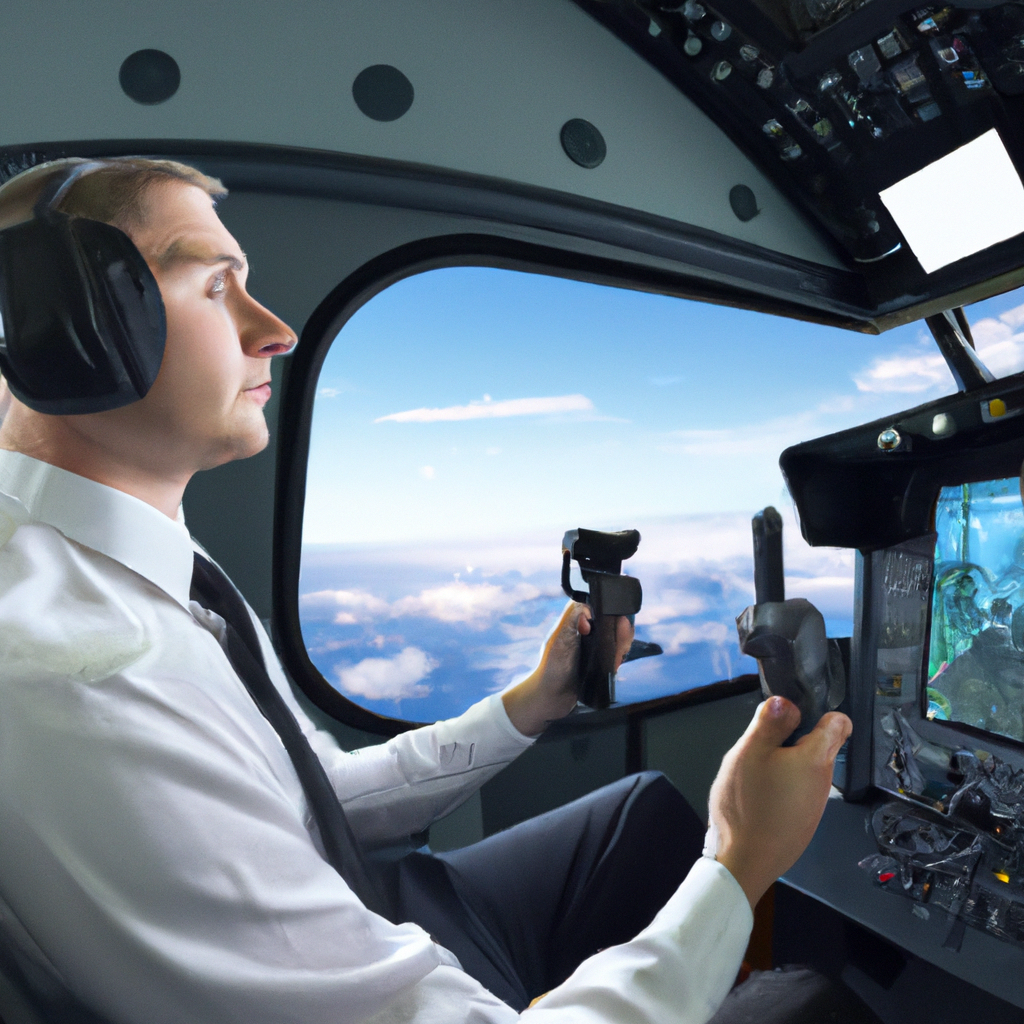작성자 정보
- dml0211 작성
- 작성일
컨텐츠 정보
- 4,287 조회
- 목록
본문

가상 현실(VR)은 비행 시뮬레이션 및 훈련을 향상시키기 위해 항공 우주 산업에서 점점 더 많이 사용되고 있습니다. VR 기술의 사용은 조종사들이 훈련되고 비행 시뮬레이션이 수행되는 방식에 혁명을 일으킬 수 있는 잠재력을 가지고 있어 보다 몰입적이고 현실적인 경험을 제공합니다.
항공 우주 산업에서 VR을 사용하는 주요 이점 중 하나는 통제된 환경에서 실제 비행 시나리오를 시뮬레이션할 수 있다는 것입니다. 이것은 조종사들이 그들 자신이나 승객들을 위험에 빠뜨리지 않고 그들의 기술을 연습하고 연마할 수 있게 해줍니다. 또한, VR 시뮬레이션은 비상 상황 및 기타 어려운 상황을 처리하는 조종사의 능력을 테스트하도록 설계되어 전반적인 준비 상태를 개선하기 위한 귀중한 도구를 제공할 수 있습니다.
한국에서 항공우주산업은 이미 비행훈련에 가상현실 기술을 도입하기 시작했습니다. 예를 들어, 한국의 가장 큰 항공사 중 하나인 대한항공은 조종사들을 훈련시키기 위해 가상현실 시뮬레이션을 구현했습니다. VR 시뮬레이션은 매우 사실적이고 몰입감 있는 경험을 제공하여 조종사들이 다양한 비행 시나리오를 탐색하고 예상치 못한 사건에 대응하는 연습을 할 수 있도록 합니다. 이는 훈련의 질을 향상시켰을 뿐만 아니라 전통적인 비행 시뮬레이션 훈련에 필요한 비용과 시간을 감소시켰습니다.

또 다른 예는 한국항공우주연구원인데, 한국항공우주연구원은 우주비행사와 우주 공학자들을 훈련시키기 위해 VR 기반의 비행 시뮬레이터를 개발했습니다. 가상현실 시뮬레이션은 우주비행사들이 우주유영과 무중력 환경에서 장비를 조작하는 것과 같은 작업을 연습할 수 있게 해주어, 그들이 실제 임무에 대비할 수 있는 귀중한 도구를 제공합니다.
결론적으로, 항공 우주 산업에서 VR 기술의 사용은 비행 시뮬레이션과 훈련을 개선하는 데 많은 이점을 제공하고 있습니다. VR은 더 사실적이고 몰입감 있는 경험을 제공함으로써 훈련의 질을 향상시키고 조종사와 우주비행사들이 실제 시나리오에 대비할 수 있도록 돕고 있습니다. VR 기술이 계속 발전함에 따라, 항공 우주 산업에서 VR 기술의 사용은 훨씬 더 널리 퍼져 비행 시뮬레이션과 훈련에 훨씬 더 큰 이점을 제공할 것입니다.
항공 우주 산업에서 VR의 또 다른 이점은 특정 훈련 요구를 충족하도록 시뮬레이션을 사용자 지정할 수 있는 능력입니다. 예를 들어, VR 시뮬레이션은 특정 항공기 모델, 비행 경로 및 비상 시나리오에 초점을 맞추도록 설계될 수 있습니다. 이를 통해 조종사는 실제 운영에서 발생할 수 있는 특정 시나리오를 다루는 연습을 할 수 있으므로 보다 표적화되고 효과적인 훈련을 할 수 있습니다.

또한 VR 기술은 기존의 비행 시뮬레이션 훈련에 대한 보다 안전하고 비용 효율적인 대안을 제공합니다. VR을 사용함으로써 항공사는 구축 및 유지 보수 비용이 많이 들 수 있는 물리적 시뮬레이터의 필요성을 줄일 수 있습니다. 또한 VR 시뮬레이션을 컴퓨터에서 실행할 수 있으므로 물리적 공간이 필요하지 않고 비행 시뮬레이션 훈련의 탄소 발자국을 줄일 수 있습니다.
이러한 이점에도 불구하고, 항공 우주 산업에서 VR 기술의 광범위한 채택에는 여전히 몇 가지 과제가 있습니다. 주요 과제 중 하나는 VR 하드웨어 및 소프트웨어의 비용으로, 일부 항공사 및 교육 기관에는 엄청나게 비쌀 수 있습니다. 게다가, VR 시스템마다 다른 소프트웨어와 하드웨어를 사용할 수 있기 때문에, 항공사들이 그들의 요구에 가장 적합한 옵션을 비교하고 선택하는 것을 어렵게 만들기 때문에, VR 기술에 대한 표준화의 필요성이 있습니다.
결론적으로, VR 기술은 개선된 비행 시뮬레이션 및 훈련, 비용 절감, 더 안전하고 몰입도 높은 경험을 포함하여 항공 우주 산업에 많은 이점을 제공하고 있습니다. 몇 가지 도전에도 불구하고, VR은 조종사와 우주비행사가 훈련되고 비행 시뮬레이션이 수행되는 방식에 혁명을 일으킬 수 있는 잠재력을 가지고 있음이 분명합니다. VR 기술이 계속 발전하고 더 광범위하게 채택됨에 따라, 그것이 항공 우주 산업에 미치는 영향은 훨씬 더 중요해질 것입니다.

요약:.
가상 현실(VR) 기술은 비행 시뮬레이션과 훈련을 개선하여 항공 우주 산업에 혁명을 일으키고 있습니다. VR은 조종사들이 통제된 환경에서 연습하고 기술을 연마할 수 있도록 더 사실적이고 몰입감 있는 경험을 제공합니다. 한국에서는, VR이 대한항공과 같은 항공사와 한국항공우주연구원과 같은 기관에서 비행 훈련과 우주인 준비를 위해 사용되고 있습니다. 항공 우주 산업에서 VR 기술을 사용하면 비용 절감, 향상된 교육 품질, 특정 요구 사항을 충족하도록 시뮬레이션을 사용자 지정할 수 있는 기능 등 다양한 이점을 얻을 수 있습니다. VR 하드웨어와 소프트웨어의 비용과 같은 몇 가지 문제에도 불구하고, VR은 조종사와 우주비행사가 훈련되고 비행 시뮬레이션이 수행되는 방식을 변화시킬 수 있는 잠재력을 가지고 있음이 분명합니다.
Virtual Reality (VR) is increasingly being used in the aerospace industry to enhance flight simulations and training. The use of VR technology has the potential to revolutionize the way pilots are trained and flight simulations are conducted, providing a more immersive and realistic experience.
One of the key benefits of using VR in the aerospace industry is the ability to simulate real-life flight scenarios in a controlled environment. This allows pilots to practice and hone their skills without putting themselves or passengers at risk. In addition, VR simulations can be designed to test a pilot's ability to handle emergencies and other challenging situations, providing a valuable tool for improving their overall preparedness.
In Korea, the aerospace industry has already begun to adopt VR technology for flight training. For example, Korean Air, one of the country's largest airlines, has implemented VR simulations to train its pilots. The VR simulations provide a highly realistic and immersive experience, allowing pilots to practice navigating various flight scenarios and respond to unexpected events. This has not only improved the quality of training but also reduced the cost and time required for traditional flight simulation training.
Another example is the Korea Aerospace Research Institute (KARI), which has developed VR-based flight simulators to train astronauts and space engineers. The VR simulations allow astronauts to practice tasks such as spacewalking and operating equipment in a simulated zero-gravity environment, providing a valuable tool for preparing them for real-life missions.
In conclusion, the use of VR technology in the aerospace industry is providing numerous benefits for improving flight simulations and training. By providing a more realistic and immersive experience, VR is helping to enhance the quality of training and prepare pilots and astronauts for real-life scenarios. As VR technology continues to advance, it is likely that its use in the aerospace industry will become even more widespread, providing even greater benefits for flight simulations and training.
Another advantage of VR in the aerospace industry is the ability to customize simulations to meet specific training needs. For example, VR simulations can be designed to focus on specific aircraft models, flight routes, and emergency scenarios. This allows for more targeted and effective training, as pilots can practice handling specific scenarios that they may encounter in real-life operations.
In addition, VR technology provides a safer and more cost-effective alternative to traditional flight simulation training. By using VR, airlines can reduce the need for physical simulators, which can be expensive to build and maintain. Furthermore, VR simulations can be run on a computer, eliminating the need for physical space and reducing the carbon footprint of flight simulation training.
Despite these benefits, there are still some challenges to the widespread adoption of VR technology in the aerospace industry. One of the main challenges is the cost of VR hardware and software, which can be prohibitively expensive for some airlines and training institutions. In addition, there is a need for standardization in VR technology, as different VR systems may use different software and hardware, making it difficult for airlines to compare and select the best option for their needs.
In conclusion, VR technology is providing numerous benefits for the aerospace industry, including improved flight simulations and training, cost savings, and a safer and more immersive experience. Despite some challenges, it is clear that VR has the potential to revolutionize the way pilots and astronauts are trained and flight simulations are conducted. As VR technology continues to advance and become more widely adopted, it is likely that its impact on the aerospace industry will become even more significant.
Summary:
Virtual Reality (VR) technology is revolutionizing the aerospace industry by improving flight simulations and training. VR provides a more realistic and immersive experience, allowing pilots to practice and hone their skills in a controlled environment. In Korea, VR is being used by airlines such as Korean Air and institutions such as the Korea Aerospace Research Institute for flight training and astronaut preparation. The use of VR technology in the aerospace industry provides numerous benefits, including cost savings, improved training quality, and the ability to customize simulations to meet specific needs. Despite some challenges, such as the cost of VR hardware and software, it is clear that VR has the potential to transform the way pilots and astronauts are trained and flight simulations are conducted.







